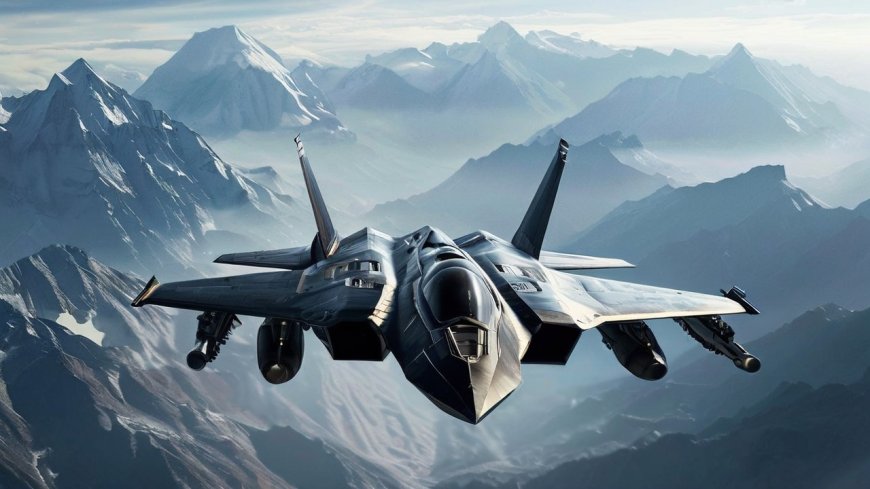The Impact of Technological Advancements in War: A Double-Edged Sword
In the end, technological advancements in war have more negative effects than arguably positive effects as human beings try to control and eliminate each other.

War has always been an arena where technological advancements are forged and tested. The development and integration of new technologies have significantly transformed the nature of warfare, dictating not only strategies and tactics but also the very fabric of military engagements and geopolitical dynamics. From the advent of gunpowder to the current era of cyber warfare and artificial intelligence (AI), each leap in technology has altered the landscape of battlefields, with profound implications for soldiers, civilians, and global power structures alike.
Historical Context: The Evolution of Warfare Technology.
The history of warfare is essentially the history of technological innovation. The introduction of metal weapons during the Bronze Age, the crossbow in the Middle Ages, and, later, firearms in the Renaissance period significantly changed combat tactics. World War I marked a pivot towards industrial warfare, where machines like tanks and airplanes began to dominate the battlefield. World War II further accelerated this trend with the advent of radar, aircraft carriers, and nuclear weapons, reshaping not just how wars were fought but also the global order. The Cold War introduced a new dimension to warfare technology, emphasizing nuclear arsenals and the doctrine of mutually assured destruction (MAD). This period also saw the rise of information warfare, as nations began utilizing propaganda and psychological tactics effectively.
The Digital Revolution: Computers and Communication.
The late 20th century and the beginning of the 21st century heralded the digital revolution, dramatically reshaping warfare. Computers transformed communication, logistics, command, and control. The Gulf War of 1991 showcased the explosive potential of technology in warfare, featuring precision-guided munitions, satellite reconnaissance, and real-time information sharing. This "information warfare" signified a departure from traditional battlefield confrontations, enabling militaries to strike hard and fast while minimizing risks to their personnel.
Drones: Changing the Face of Combat.
One of the most visible symbols of technological advancement in modern warfare is the use of unmanned aerial vehicles (UAVs), commonly known as drones. Drones have been employed for various missions, ranging from surveillance to targeted strikes. The rise of drones has allowed for remote warfare, significantly reducing the risk to soldiers and enabling nations to conduct precision operations against adversaries. However, the proliferation of drones has also kicked off ethical and legal debates. Issues surrounding accountability for civilian casualties and the implications of conducting warfare remotely—often termed "playing video games with real-life consequences"—have emerged. Drone warfare raises questions about the dehumanization of combat and the potential for such technologies to be used indiscriminately.
Cyber Warfare: The New Frontline.
As societies have grown increasingly dependent on technology, so have militaries adapted to exploit this vulnerability. Cyber warfare has become a prominent aspect of modern conflict, where nation-states engage in tactics such as hacking, information warfare, and infrastructure disruption. The 2007 cyber attack on Estonia and the interference in the 2016 US presidential election exemplify how cyber capabilities can undermine political stability and national security. Cyber warfare transcends conventional military engagements, targeting critical infrastructure, financial systems, and public trust. It complicates the concept of warfare, as attacks may not produce physical destruction but can wreak havoc on societies.
Artificial Intelligence and Autonomous Systems
The integration of AI into military technology is perhaps one of the most controversial and transformative developments in the future of warfare. AI has the potential to enhance decision-making processes, automate systems, and conduct operations without human intervention. Autonomous weapons systems, capable of identifying and engaging targets independently, are a topic of heated debate among ethicists, military strategists, and lawmakers. While proponents argue that AI can lead to greater operational efficiency and reduced human casualties, critics express concern over the inability to ensure compliance with international humanitarian law, the potential for loss of human judgment in warfare, and the risk of an arms race in autonomous weaponry. The implications of machine-driven warfare remain largely unknown, raising ethical dilemmas around accountability and moral responsibility.
The Impact on Soldiers and Civilians
Technological advancements in warfare have distinct effects on both military personnel and civilian populations. For soldiers, technology offers more sophisticated tools for combat, communication, and intelligence gathering, leading to advantages in operational effectiveness. However, reliance on advanced technology can also foster vulnerabilities, leaving troops dependent on systems that may fail or be compromised. For civilians, the ramifications can be severe. Modern conflicts are increasingly characterized by the blurring lines between combatants and non-combatants, often resulting in collateral damage and civilian casualties. High-tech warfare, while aiming for precision, has not eliminated the harsh realities of war. Civilian infrastructure, such as water systems and power grids, has become targets, and the psychological toll of warfare technology on populations cannot be understated.
Geopolitical Implications
The shifting landscape due to technological advancements in warfare has significant geopolitical implications. Nations are often compelled to invest in advanced military technologies to maintain their status on the global stage. This race for dominance can increase tensions and foster an arms race, particularly in regions where rivalries are pronounced. Moreover, the proliferation of technology to non-state actors and rogue states will likely further destabilize security dynamics. Groups with access to advanced weaponry can challenge traditional military forces, leading to asymmetrical warfare that complicates response strategies for established powers.
The Ethical and Legal Quandaries
As warfare technology continues to evolve, ethical and legal questions become increasingly complex. The lack of comprehensive international regulations governing autonomous weapons and cyber warfare creates a precarious landscape. The inability to attribute responsibility for cyber attacks and the potential for AI-driven decision-making without human oversight raises critical concerns about accountability and the ethical use of violence in conflicts. There have been calls for a preemptive ban on autonomous weapons akin to those that exist for chemical and biological weapons. The push to develop international norms and legal frameworks for emerging military technologies is essential for preserving humanity in warfare and preventing the escalation of violence.
In conclusion, technological advancements have irrevocably changed the nature of warfare, bringing both benefits and challenges. Enhanced capabilities have provided military forces with unprecedented advantages in combat scenarios while also introducing complexities that complicate ethical concerns, legal frameworks, and the very definition of warfare. As military technology continues to evolve, it is imperative for policymakers, military leaders, and society at large to navigate these changes thoughtfully. Striking a balance between leveraging technological advancements to protect national interests and ensuring adherence to ethical principles and humanitarian laws is crucial for the future of warfare. Ultimately, it will be the responsibility of humanity to ensure that these advancements are directed toward fostering peace rather than perpetuating conflict.







